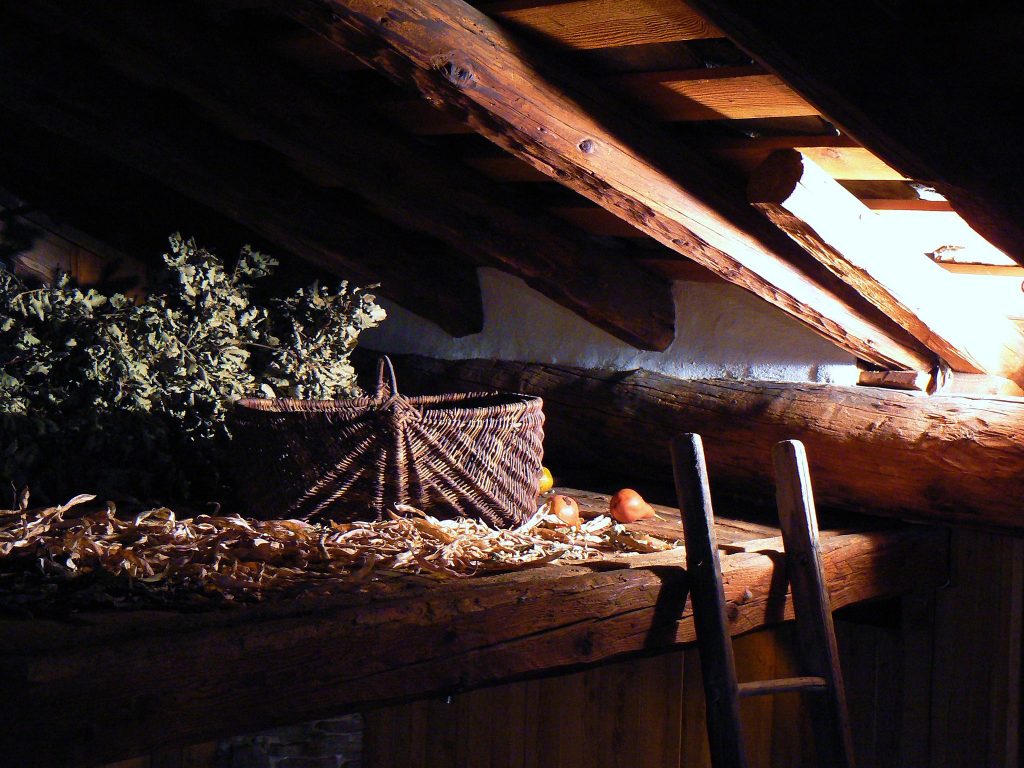We are in Valle d'Aosta, a Introd and more specifically in the town of Ville Dessus. Here stands the old rural house of Maison Bruil. Perhaps still little known but certainly worthy of attention. From the outside it looks like a small house, which can be visited in a matter of minutes. Yet as you cross its entrance, the perspectives slowly change, unfolding in a path that leaves you surprised.

Maison Bruil, the production house
Visiting Maison Bruil is a special experience, capable not only of surprising. Go inside, observe the architectural details, understand the meaning of the rooms it is something that induces reflection. So small and cozy from the outside, so big and functional inside. Maison Bruil was born at the end of the 600th century and then underwent a series of alterations over the course of the following century and up to 1856. What we see today is in fact the result of the merger of two residential areas. The house is at a glance a typical example of Aosta Valley architecture, with a large use of stone, wood and the characteristic lose.

Spread over three floors, it is structured according to a specific criterion, the one that combined private life and work. The cardinal principle of the peasant mentality for which the strength for survival lay in the family. We will then understand the reason for the numerous rooms obtained from the basement up to the roof. The organization of the spaces responded to the multiple productive functions of the house. It could therefore be said that Maison Bruil was not just a home, at least not in the meaning we have today. This explains the amazement one feels when crossing its rooms: a thoughtful succession of rooms in which nothing is left to chance. There is therefore the crotta, the drying area, the icebox, the attic and much more. A single roof under which family and animals can be brought together, in a perfect organization of roles.
The food museum
Entering the spirit of Maison Bruil means grasping its essence. A useful guide, in this sense, is given by the museum exhibition. Arrangements that aim to reproduce the idea of the life of the past and above all of ancient knowledge. The family was the keeper of knowledge which were taught from an early age. It was necessary to “keep up with the pace”, in step with the seasons or to play in advance, so as to have useful future stocks. Everything was carried out with wisdom and attention so that nothing was wasted. Thus, many methods for food preservation were studied, such as carrots placed in fine-grained sand. Or wooden chests full of pods in which to store sausages to dry. Making food last was certainly a priority that led man's mind to find the most disparate solutions.

It makes us smile to think that today, despite having appliances that did not exist in the past, we are capable of making a product expire. Modernity has given us comforts that sometimes induce distractions. The exhibition hosted at Maison Bruil follows a precise fil rouge: “Conserver le souvenir… Se souvenir pour conserver”. Keep the memory… Remember to keep. A journey through the most curious techniques of food preservation, systems for air insulation, cold, salting etc. The visit ends with the opportunity to purchase typical local products, food and cosmetics made with local resources. Maison Bruil is a journey that tells the story of an industrious and wise mentality that still finds its own dimension today.





